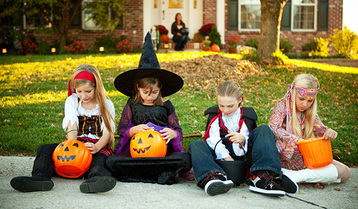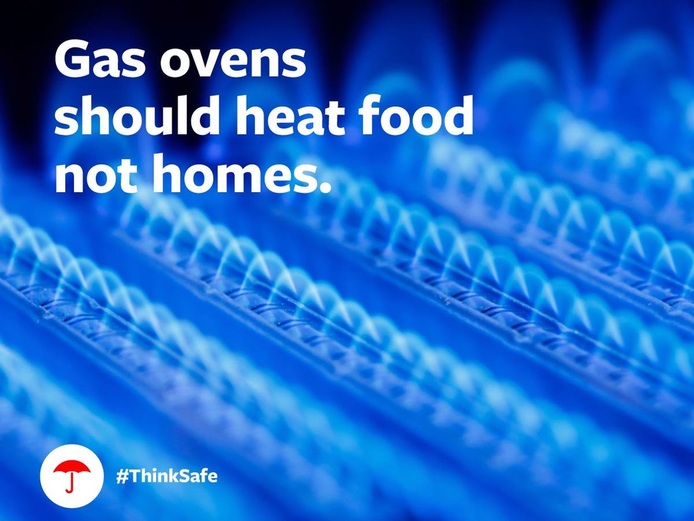|
Falling leaves may be pretty, but disposing of them can get ugly. Plus, options (or laws) for burning, bagging, and composting are different in each area. Here’s what to know:
Don’t burn Many local governments are banning leaves and other yard trimmings from landfills, and you may be tempted to burn the leaves in your yard. Leaf burning, however, becomes a fire hazard that can lead to air pollution and health problems. The open burning of leaves produces particulate matter and hydrocarbons that contain toxic, irritant and carcinogenic compounds, such as carbon monoxide. Burning leaves is not recommended by the Environmental Protection Agency (EPA)—nor is it legal in most states. Do bag If you’ve got a lot of time and a strong back (who has either, right?), bagging leaves is one option. This moderate physical activity helps build upper-body and core strength and gives you the opportunity to get outside for some fresh fall air. Remember, sticks, rocks, pine cones, limbs and other debris should not be mixed with loose leaves. Also, check with your municipality or borough to see what, if any, weight limit or bag color has been specified for leaf-filled bags, Then, when they’re ready to go, put them at the curb on your regular trash collection day or as directed. Try composting Composting is an environmentally-friendly form of recycling that helps soil retain moisture and nutrients and increase fertility. When leaves are composted along with nitrogen-filled grass clippings, the resulting compost becomes organic fertilizer or mulch for flowerbeds, gardens or around shrubs. The EPA’s Web site offers a free detailed guide on how to create your own compost pile in your backyard. The most important thing to note is what can and cannot be composted. Stay away from meat trimmings and bones—they may attract pests. What you need to know about the law Laws for leaf disposal vary depending on where you live. Visit your city’s Web site or call your local public works department for more information. - See more at: https://www.erieinsurance.com/blog/2009/dont-leave-leaves?utm_source=eriefacebook&utm_medium=eriesocial&utm_campaign=general#prclt-dd5rrc81
0 Comments
 The annual apparition of spooky skeletons, broomstick-riding witches and carved pumpkins is a sure sign fall is well under way. Second only to Christmas in terms of how much consumers spend on decorations,¹ Americans of all ages seem to love celebrating Halloween. The Halloween spirit has spread to the inside and outside of the home as well, with homeowners setting up elaborate displays that range from haunted houses in the basement to graveyards on the lawn, as well as high-tech LED lighting outdoors. When planning and setting up your Halloween decorations, it is a good idea to consider any potential risks involved. Taking steps to prepare your property and to protect any visitors can help spare you from a truly frightening night. Be Aware of Dangers that Might Not be Visible During the Day
Remember that Welcoming the Neighborhood Inside Also Invites Risk
Be Smart about Where You Place Decorations
Set Up Spooky Lighting with Caution
Choose Decorations Wisely
Do Not be Frightened by the Risks
Sources: ¹ https://nrf.com/media/press-releases/ghouls-and-ghosts-galore-158-million-people-celebrate-halloween-this-year  When thinking of the cause of a kitchen fire, it is common to think of cooking. But not all kitchen fires start because of cooking hazards. Non-cooking related fires commonly involve refrigerators, freezers or dishwashers. The following tips can help prevent non-cooking related fires from occurring in your kitchen.
What to Do If a Kitchen Fire Flares UpBy exercising caution at all times in your kitchen, you can help reduce the risk of a kitchen fire. But if a fire does flare up, you need to be prepared.
Hurricanes are most prevalent from June 1 to Nov. 30, and can inflict serious damage to homes and businesses, especially in the form of extreme wind and water damage. Fortunately, careful planning and organization can help you better prepare for and manage the damage and costs associated with the aftermath of dangerous hurricanes.
Here are some helpful tips for preparing for and managing potential loss before, during and after a hurricane. Before the hurricane, you should:
Preparing the Outside of Your Home If a hurricane is likely in your area, you should:
When a hurricane watch is issued, you should:
When a hurricane warning is issued, you should:
If officials issue a mandatory evacuation, you should:
After the hurricane, you should:
- See more at: https://www.erieinsurance.com/home-insurance/disaster-safety/ |
Contact Us(570) 344-5150 Archives
May 2017
Categories |
Navigation |
Connect With Us |
Contact UsNortheast Insurance & Financial Consultants
2121 Shoppes Blvd. Moosic, PA 18507 (570) 344-5150 Click Here to Email Us |
Location |
Website by InsuranceSplash

 RSS Feed
RSS Feed
